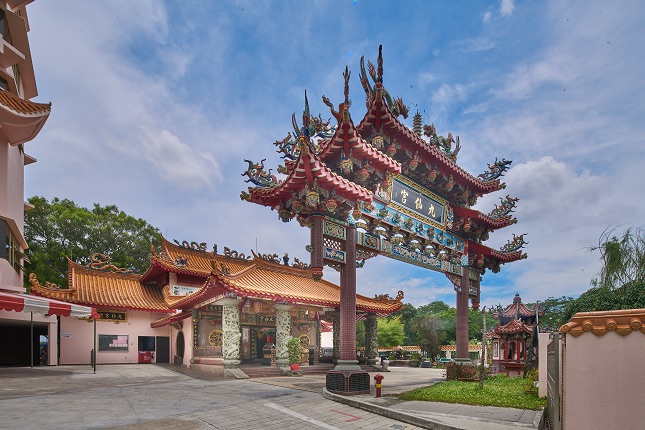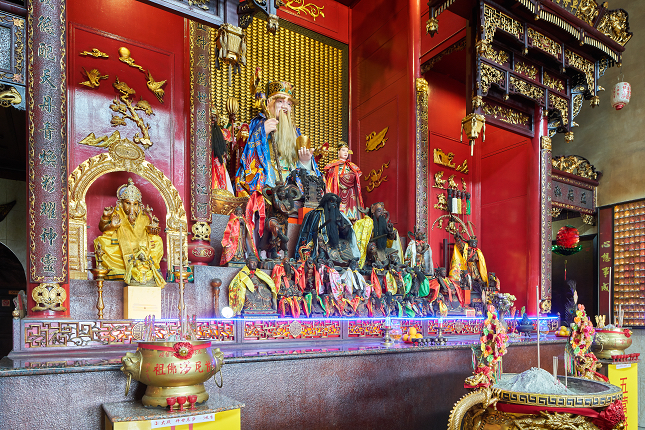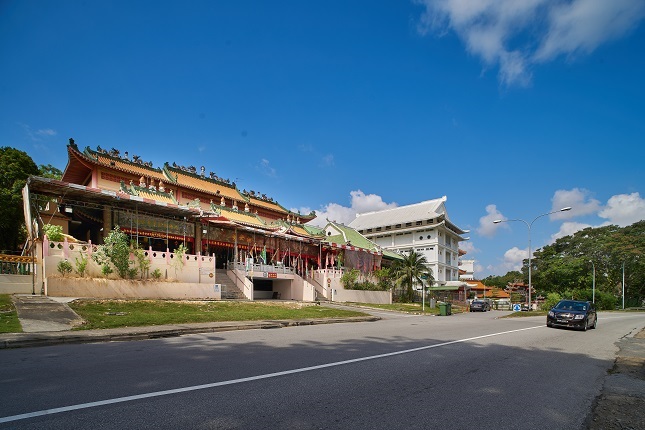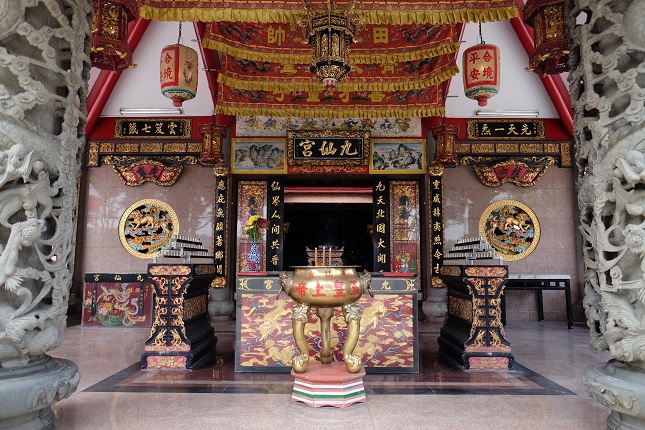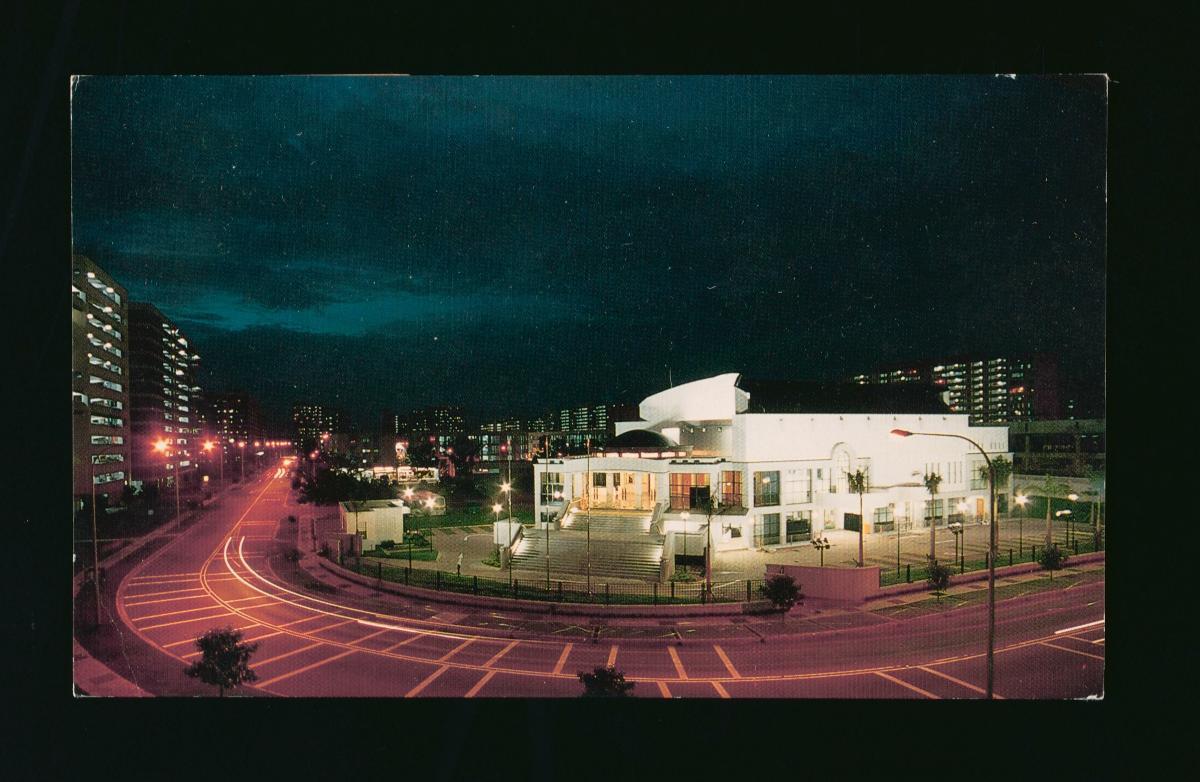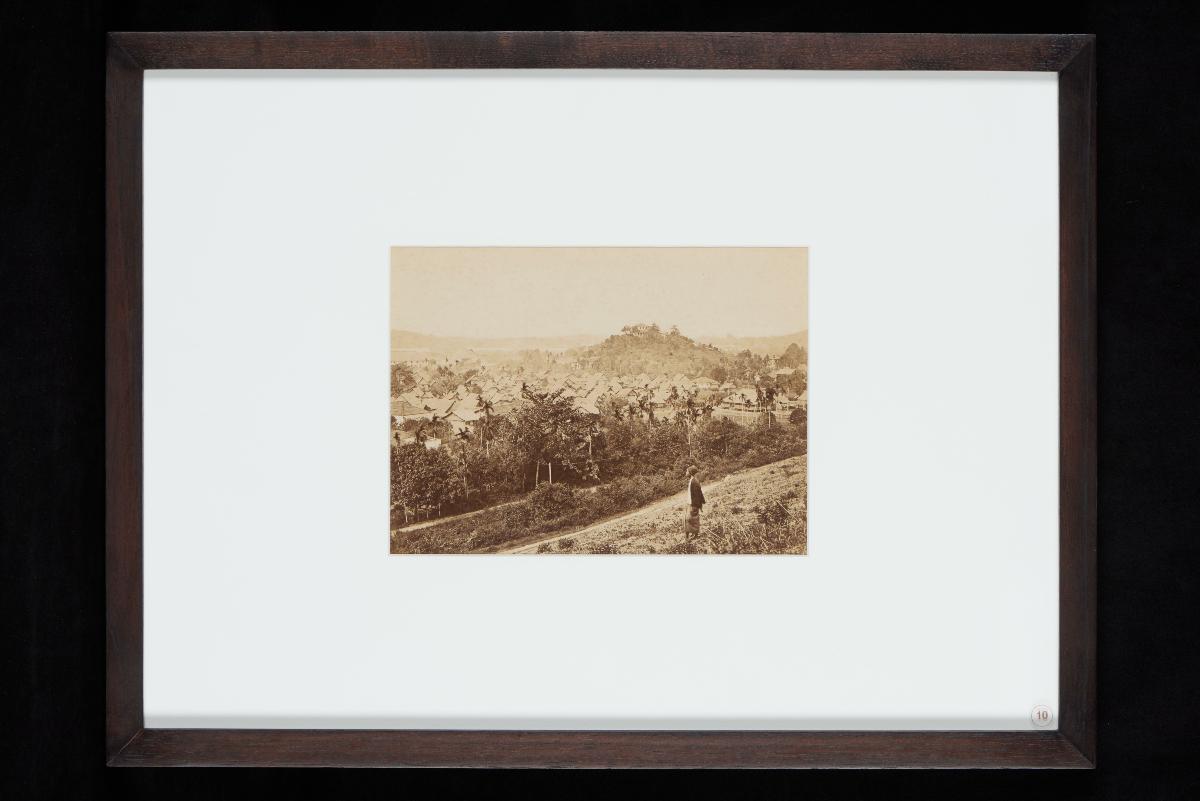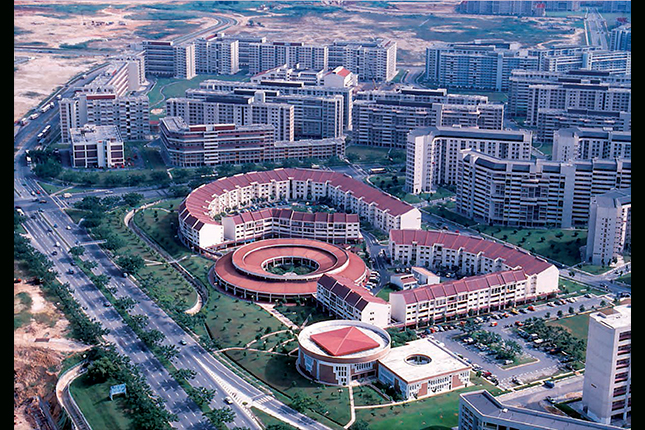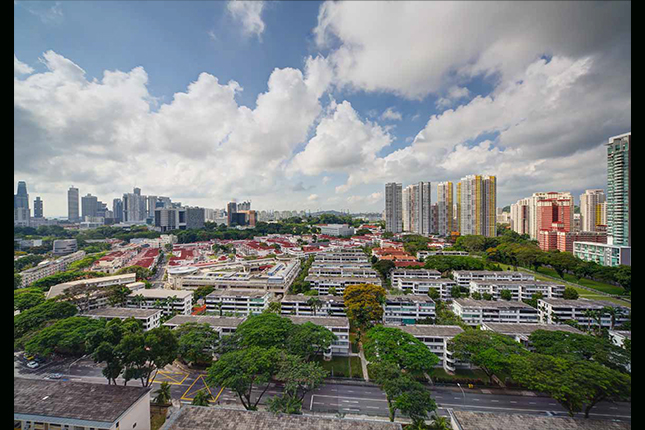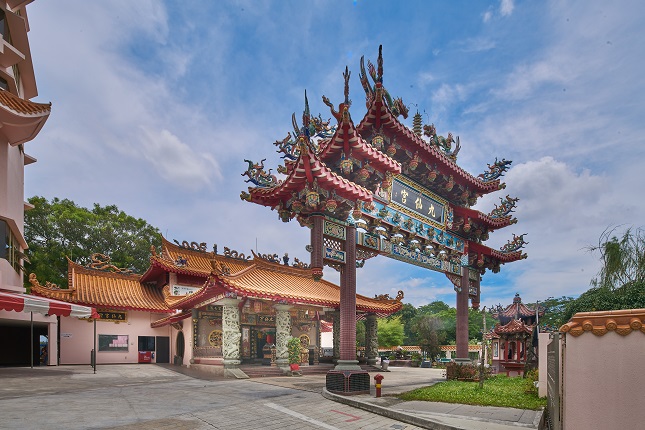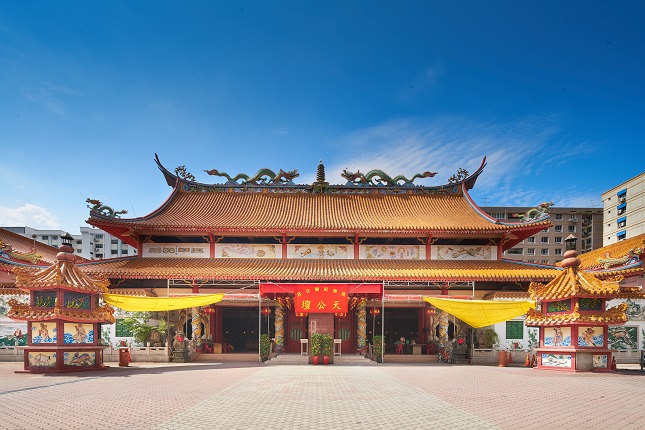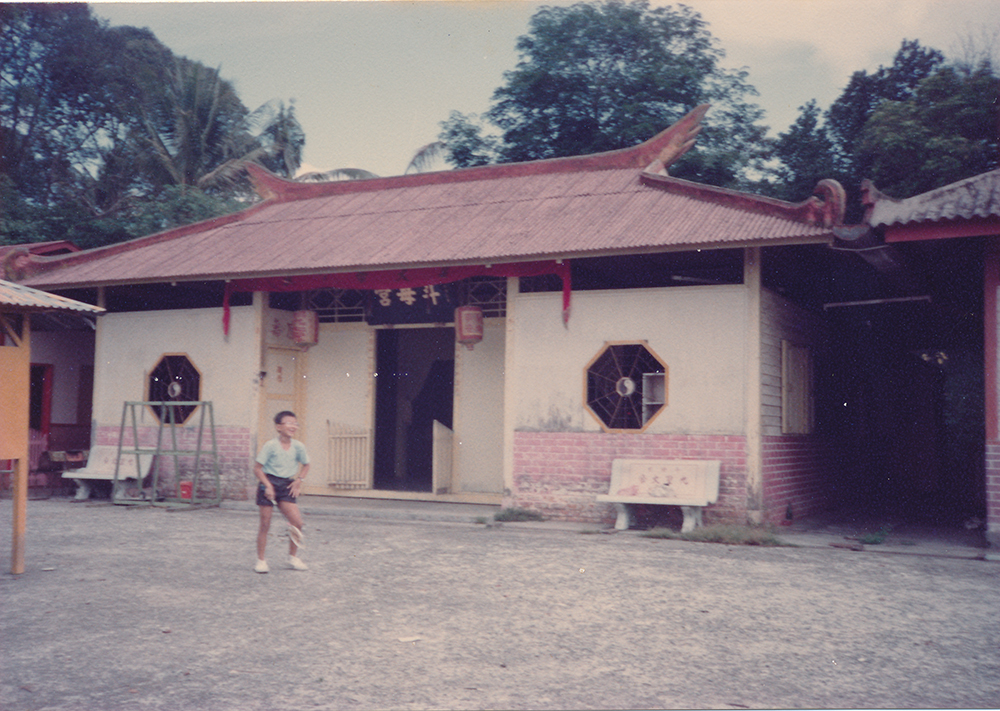This cluster of religious institutions includes temples previously located in Tampines during the kampong era (1800s-1980s) as well as temples from other parts of Singapore. They include Taoist and Buddhist temples, and the Jiutiaoqiao Xinba Nadutan Temple (九条桥新 芭拿督坛) which is notable for housing shrines of multiple faiths and drawing worshippers from across various cultures.
The Jiutiaoqiao Temple is a constituent of the Nadutan Baoangong Tiandegong Temple (拿督坛保安宫天德宫; 95 Tampines Link), along with the Poh Ann Keng Temple (保安宫) and the Tian Teck Keng Temple (天德宫). Founded in 1927 in Ang Mo Kio before moving to Tampines in 2004, Jiutiaoqiao enshrines the Taoist Tua Pek Kong, the Hindu god Ganesha and the uniquely Malayan deity Datuk Gong. The Tian Teck Keng Temple is known for being the only temple in Singapore to depict the deity Nezha in his battle form of three heads and six arms.
The Kew Sian King Temple (九仙宫; 7 Tampines Avenue) traces its origins to the old Tampines Road and was built near Teck Hock Village at the 7 3⁄4 milestone in 1928. A stone tablet in the temple recounts aspects of its history, including its founding by members of the Peh clan from Fujian province in China. This temple enshrines the female deity Jiutian Xuannu, as well as other deities including Guanyin and Tua Pek Kong. During the kampong period, the temple was known colloquially as Hin Nim Ma Keng, in reference to the deity Jiutian Xuannu’s Hokkien name.
Other temples in the cluster include the Hiap Tien Keng Leng Poh Tian which is dedicated to Guan Di, the God of War.
At the end of the temple cluster and along Tampines Avenue lies a row of shophouses that was once part of the former Hun Yeang Village. The village was named after 20th century plantation owner Khoo Hun Yeang. The shophouses, along with Hun Yeang Road and Jalan Sam Kongsi Road, are among the few physical reminders left of rural Tampines before the area underwent redevelopment during the late 1970s.




